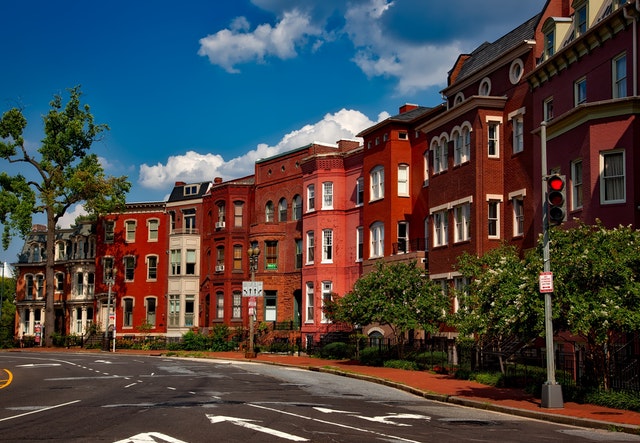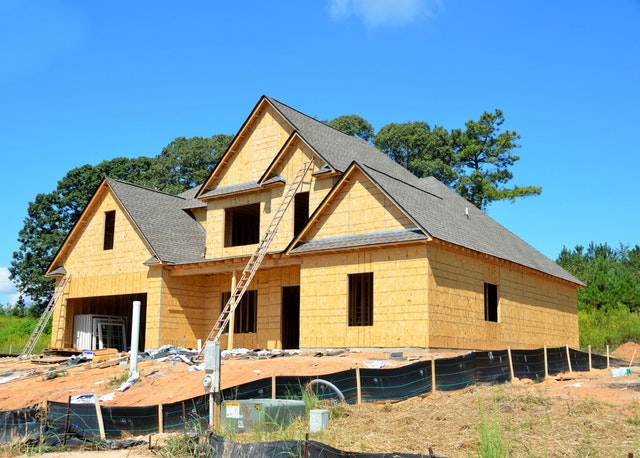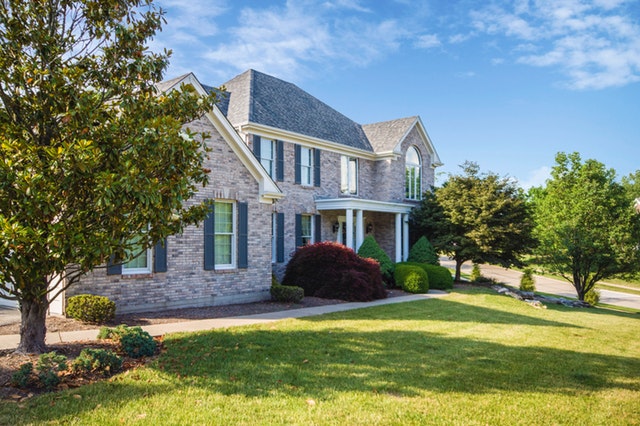 Home price growth continued to slow in June according to Case-Shiller’s 20-City Home Price Index. 17 cities reported higher home prices in June, but three cities reported lower home prices month-to-month. Seattle, Washington was the only city to report lower home prices year-over-year in June.
Home price growth continued to slow in June according to Case-Shiller’s 20-City Home Price Index. 17 cities reported higher home prices in June, but three cities reported lower home prices month-to-month. Seattle, Washington was the only city to report lower home prices year-over-year in June.
Phoenix, Arizona Home Price Growth Highest in June
Phoenix, Arizona toppled Last Vegas, Nevada’s hold on first place for home price growth in June. According to Case-Shiller’s 20-City Home Price Index, home prices in Phoenix rose by 5.80 percent year-over-year in June. Las Vegas, Nevada followed closely with year-over-year home price growth of 5.50 percent. Tampa, Florida had the third highest rate of home price growth with a year-over-year reading of 4.70 percent.
Home prices also slowed nationally; Case-Shiller reported 3.10 percent growth as compared to May’s year-over-year pace of 3.30 percent growth in home prices.
Home Buyers Leaving High-Cost West Coast
Analysts pointed out that recent slowing in home price growth followed a long period of rapidly rising home prices and higher mortgage rates. This sidelined many buyers as cash buyers and investors competed for fewer available homes. First-time and moderate income buyers could not afford rapidly rising prices and mortgages. Stricter mortgage loan requirements put in place after the Great Recession made qualifying for home loans more difficult.
Homeowners may not be seeing top pricing, buyer competition and offers higher than their asking prices, but after the long and fast increase in home prices, many sellers stand to realize significant profits after years of gains. At the height of the housing recovery, cities on the west coast saw steep rises in home prices. Seattle, Washington, Portland, Oregon and San Francisco, California enjoyed rapid home price growth as buyers paid cash and outbid each other, but lagging home price growth suggests that sky-high home prices have peaked in the West.
Seattle, Washington was the first city to show a year-over-year drop in home prices. Low mortgage rates may encourage formerly sidelined home buyers to enter the housing market. Analysts said that the only obstacle to increasing home sales might be homeowners unwilling to sell as home prices ease. Consumer concerns over the economic impact of trade tariffs may delay decisions to buy a home as consumer costs continue to rise. Home builders share these concerns as the cost of imported building materials increases.
 Flipping homes is popular once again. It took about eight years after the Great Recession that started in 2006 for home prices to rebound to the levels seen before the recession. Then, by 2016, in many areas, home prices started to rapidly increase.
Flipping homes is popular once again. It took about eight years after the Great Recession that started in 2006 for home prices to rebound to the levels seen before the recession. Then, by 2016, in many areas, home prices started to rapidly increase. A hot market in real estate is identified by a few things, which include higher prices, lower amounts of unsold inventory, and desirable neighborhoods. Neighborhoods can increase in value because of having an excellent location, high-paying jobs, quality schools, and a variety of attractive amenities.
A hot market in real estate is identified by a few things, which include higher prices, lower amounts of unsold inventory, and desirable neighborhoods. Neighborhoods can increase in value because of having an excellent location, high-paying jobs, quality schools, and a variety of attractive amenities. Home Builder sentiment rose one point in July according to the National Association of Home Builders Housing Market Index. 2019 builder confidence in housing market condition continued to fall short of 2018 levels. July’s Housing Market Index reading of 65 was one point higher than June’s reading.
Home Builder sentiment rose one point in July according to the National Association of Home Builders Housing Market Index. 2019 builder confidence in housing market condition continued to fall short of 2018 levels. July’s Housing Market Index reading of 65 was one point higher than June’s reading. Homebuilder confidence dropped two points in June according to the National Association of Home Builders Housing Market Index. June’s index reading was 64, which indicates strong sentiment among home builders for current housing market conditions.
Homebuilder confidence dropped two points in June according to the National Association of Home Builders Housing Market Index. June’s index reading was 64, which indicates strong sentiment among home builders for current housing market conditions. Case-Shiller Indices reported slower home price growth in March with a 3.70 percent gain year-over-year as compared to 3.90 percent home price growth for the year-over-year period in 2018. This was the slowest pace of home price growth in seven years.
Case-Shiller Indices reported slower home price growth in March with a 3.70 percent gain year-over-year as compared to 3.90 percent home price growth for the year-over-year period in 2018. This was the slowest pace of home price growth in seven years. The National Association of Home Builders reported the highest builder confidence reading in seven months for May. May’s reading exceeded expectations for an index reading of 64 and rose three points to 67.
The National Association of Home Builders reported the highest builder confidence reading in seven months for May. May’s reading exceeded expectations for an index reading of 64 and rose three points to 67. Home price growth slowed in February according to the Case-Shiller 20-City Home Price Index. Home price growth hit its lowest rate in more than six years; this indicates that the roaring growth of home prices is settling and could provide opportunities for more would-be buyers to enter the housing market.
Home price growth slowed in February according to the Case-Shiller 20-City Home Price Index. Home price growth hit its lowest rate in more than six years; this indicates that the roaring growth of home prices is settling and could provide opportunities for more would-be buyers to enter the housing market. The meeting of the Federal Reserve’s Federal Open Market Committee ended Wednesday with the Committee’s customary post-meeting statement recapping monetary policy matters considered by the Committee. Members voted not to change the current target rate range of the federal funds rate. The current rate range of 2.25 percent to 2.50 percent.
The meeting of the Federal Reserve’s Federal Open Market Committee ended Wednesday with the Committee’s customary post-meeting statement recapping monetary policy matters considered by the Committee. Members voted not to change the current target rate range of the federal funds rate. The current rate range of 2.25 percent to 2.50 percent. Home builder confidence increased in April to an index reading of 63, which was one point higher than for March and the highest reading in six months. Analysts said that April’s reading revealed more about housing market conditions in the past six months than it was an indicator of future market conditions.
Home builder confidence increased in April to an index reading of 63, which was one point higher than for March and the highest reading in six months. Analysts said that April’s reading revealed more about housing market conditions in the past six months than it was an indicator of future market conditions.